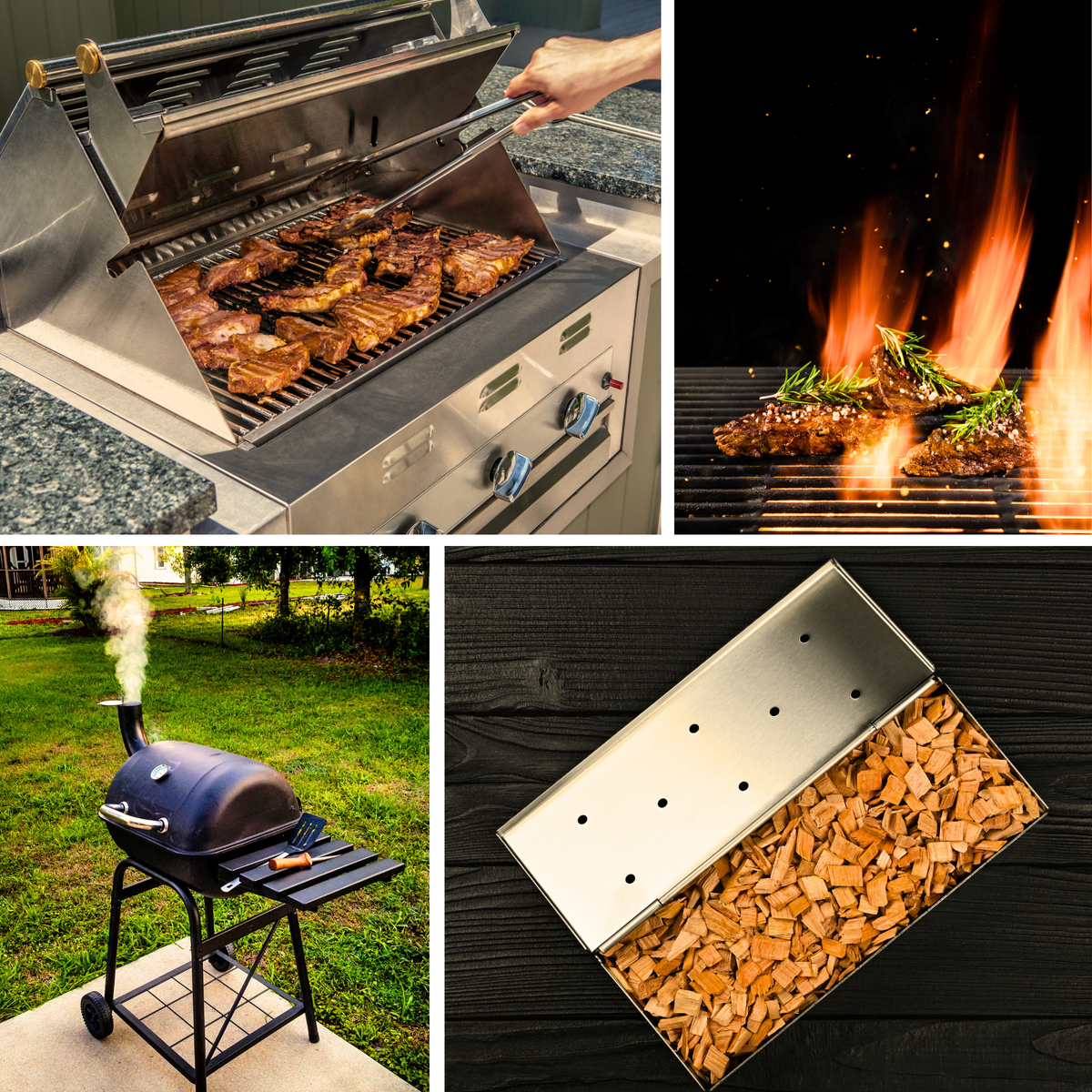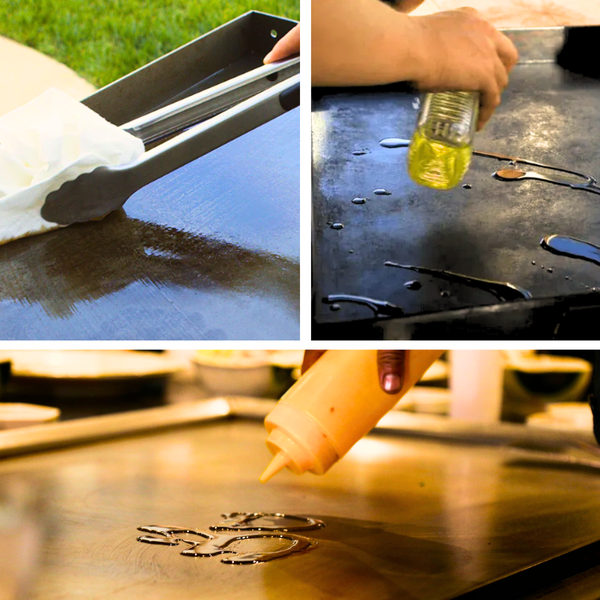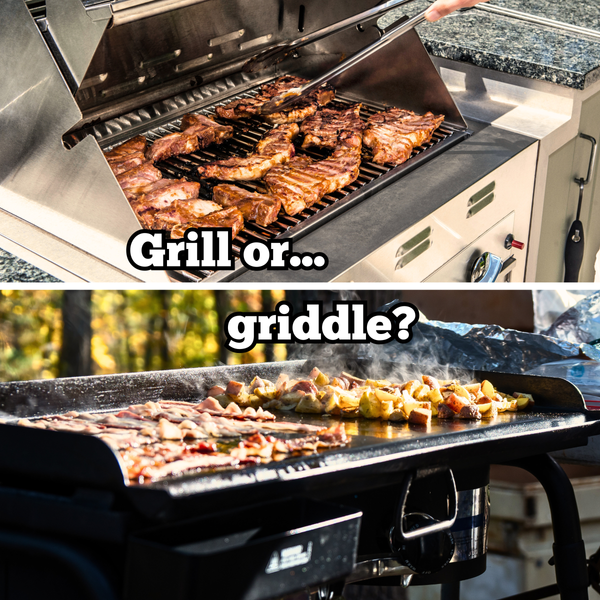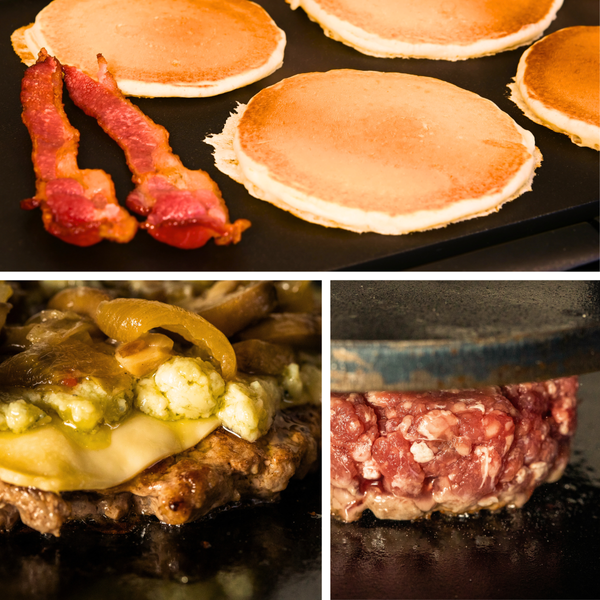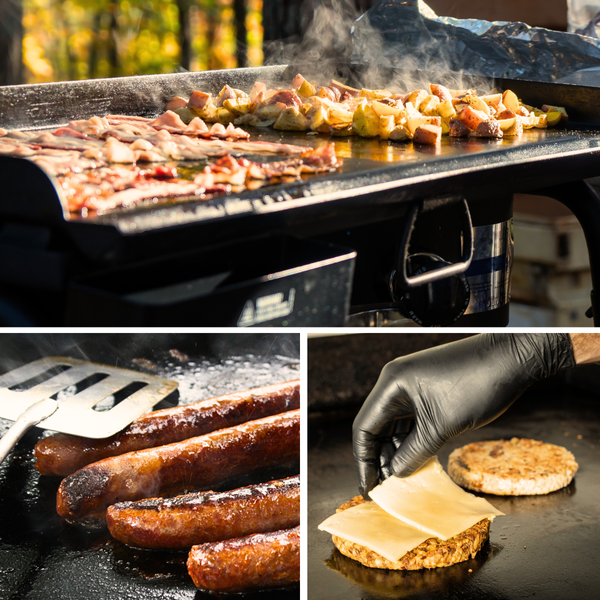Key Takeaways:
- Yes, you can use your gas grill to smoke meats by creating indirect heat zones and using wood chips or chunks.
- Proper setup with a water pan, wood chips, and maintaining the right temperature is crucial for a successful smoking process.
- Smoking on a gas grill requires patience and practice to master the technique for that perfect smoky flavor.
Smoking meats is an age-old technique that imparts a rich, smoky flavor to your favorite cuts. Traditionally, this is done in a dedicated smoker, but what if you only have a gas grill at your disposal? The question arises, "Can I use my gas grill to smoke meats?" The answer is a resounding yes! With the right setup and a bit of know-how, your good ol' gas grill can double as a smoking machine. Let's dive into how you can transform your propane grill into a meat-smoking haven.
Transforming Your Gas Grill into a Smoker
Most gas grills can be easily adapted for smoking, even if they don't come with a built-in smoker box. The key is to create indirect heat zones where the meat can cook slowly and absorb the smoky flavor. For a two burner grill, this means turning on one burner to create a hot zone and leaving the other side off to serve as a cool zone. On a four burner grill, you can achieve this by lighting the two outer burners and placing the meat in the center.
The Role of Wood in Smoking
Wood chips or chunks are essential for imparting that delicious flavor when smoking meat on a gas grill. Soak wood chips for at least 30 minutes before use to prevent them from catching fire too quickly. Dry wood chips or wood chunks can also be used, but they tend to produce smoke faster and burn out more quickly, which might require more frequent replenishment.
Setting Up for Smoking Success
To start, you'll need to prepare your grill grates and create a space for the wood chips. A smoker box or a DIY smoke packet made from heavy duty aluminum foil with poked holes can be placed directly over the heat source. This setup allows the wood to smolder and produce smoke without flames.
Managing the Heat
Temperature control is crucial in the smoking process. Aim for an internal grill temperature between 225°F and 250°F, which is the sweet spot for smoking meats. Use a dome thermometer or a digital probe to monitor the temperature, as the built-in thermometer on most grills can be inaccurate.
Creating the Right Environment
A water pan is another critical component of the grill setup. Placed in the cool zone, it acts as a heat sink to stabilize the temperature and adds humidity to the cooking chamber, which helps in keeping the meat moist during longer cooks.
The Smoking Process
Once your grill is set up, it's time to place the meat on the gas grill. Position it on the grill grates over the cool zone, away from the direct heat. Close the grill lid to trap the smoke and let the cooking process begin. It's important to resist the temptation to open the lid too often, as this lets heat and smoke escape.
Choosing the Right Wood
Different types of wood impart different flavors. For instance, hickory and mesquite provide a stronger smoky flavor, while apple and cherry wood offer a sweeter touch. Experiment with various wood pellets or chunks to find the flavor profile that best suits your palate.
Preparing Your Grill for Smoking
When you're ready to venture into the world of smoked meat using your gas grill, the preparation stage is crucial. Begin by thoroughly cleaning your grill surface to ensure no leftover residues can affect the flavor of your meat. Whether you're working with natural gas or propane grills, make sure all the required fields are marked and functioning correctly. This includes checking the propane burner for any blockages and ensuring the grill grate is properly positioned for even heat distribution.
Next, consider how many burners your grill has to strategize the placement of your meat. For indirect smoking, you'll want to light only one side of the grill, leaving the other side off. This setup allows you to place the meat on the cooler side, away from direct heat, preventing it from cooking too quickly. If your grill comes with a built-in smoker box, that's a bonus; otherwise, you can use smoker boxes or create smoke with soaked wood chips in foil pouches. Just remember to poke holes in the foil to let the smoke escape and flavor your meat.
Utilizing a Built-In Smoker Box
If your gas grill comes with a built-in smoker box, you're in for a treat. This feature is specifically designed to hold wood chips or pellets and allows smoke to permeate the meat effectively. To use it, simply fill the smoker box with your chosen wood chips. Make sure they're not too tightly packed, as the air needs to circulate to keep them smoldering. The built-in smoker box is a game-changer for those who love the convenience of gas grilling but crave that authentic smoked flavor in their meats.
The beauty of a built-in smoker box is that it's designed to integrate seamlessly with your grill's heating system. This means you can maintain a consistent temperature without the worry of the wood chips catching fire, which can be a concern when improvising with foil packets or other methods. Remember to preheat the grill with the smoker box inside so that it's ready to start producing smoke as soon as you place your meat on the grates. This way, you'll get the most out of your smoking session from the very beginning.
Experimenting with Different Smoking Techniques
When you're looking to expand your culinary horizons with your good ol' gas grill, experimenting with different smoking techniques can be both fun and rewarding. One approach is to use indirect heat by turning on only one burner and placing the meat on the opposite side of the grill. This method allows the meat to cook slowly, absorbing the smoky flavors without direct exposure to the flames. By adjusting the burner's intensity and the grill's ventilation, you can control the temperature and smoke level, giving you the flexibility to smoke a variety of meats to perfection.
Another technique involves using a water pan. Placing a pan filled with water beneath the grilling surface can help regulate the temperature and add moisture to the air inside the grill. This is particularly useful when smoking for extended periods, as it prevents the meat from drying out. The steam from the water pan also helps to enhance the smoke adherence to the meat, resulting in a more pronounced flavor. Remember to refill the water pan as needed to maintain the humidity throughout the smoking process.
Marinating and Brining for Enhanced Flavor
Before you even fire up your built-in smoker box, consider marinating or brining your meats to elevate the final taste. Marinating involves soaking the meat in a mixture of herbs, spices, and liquids such as oils, vinegars, or citrus juices. This not only infuses the meat with flavor but can also help tenderize tougher cuts. Allow the meat to marinate for several hours, or even overnight, to ensure the flavors penetrate deeply.
Brining, on the other hand, is a technique that involves submerging the meat in a saltwater solution, often with added sugars and spices. The brine solution leads to juicier and more flavorful meat by breaking down some of the proteins and allowing the muscle fibers to retain more moisture. Whether you're smoking poultry, pork, or even beef, a good brine can make all the difference. Just be sure to rinse the meat after brining to avoid an overly salty taste, and pat it dry before placing it in your gas grill's smoker box.
Safety Measures to Prevent Fires
When smoking meats on a gas grill, safety should always be a top priority. One of the main concerns is the potential for the wood chips to catch fire, which can turn your smoking session into an unwanted fiery spectacle. To prevent this, always soak your wood chips in water for at least 30 minutes before using them. This will ensure that they smolder and produce smoke rather than igniting. Additionally, keep a spray bottle of water handy to douse any flames that might unexpectedly arise.
Moreover, it's crucial to monitor your grill throughout the smoking process. Never leave it unattended, as flare-ups can occur, especially if there's a buildup of grease on the grill. Regular cleaning and maintenance of your good ol' gas grill are essential to minimize the risk of fires. Make sure to check the grease catch pan before you start smoking, as a full pan can easily overflow and catch fire. By taking these precautions, you can enjoy the process of smoking meats without the worry of a potential hazard.
Smoking Techniques and Tips
To create smoke on a gas grill, you have a few options. Soaked wood chips can be placed directly on the grill grate over an active burner, or for a more controlled smoke, use a smoke tube or disposable aluminum pan. If you opt for the pan method, fill it with wood chips, cover it with foil, and again, don't forget to poke holes to let the smoke escapes. Place the pan over the burner and wait for the chips to smolder and produce smoke.
The time smoking meat can vary greatly depending on the cut and size, so patience is key. Keep a close eye on the temperature and smoke level. If you're using a pellet smoker, the consistency of smoke is typically easier to maintain. However, with a gas grill, you may need to refill your wood chips or adjust your smoker boxes periodically to maintain the desired amount of smoke. Be vigilant to ensure the wood chips smolder and create smoke without catching fire, which can lead to unwanted flare-ups and a burnt taste.
Monitoring Meat's Internal Temperature
The internal temperature of the meat is the best indicator of doneness. Use a meat thermometer to check the internal temperature, aiming for the target temperature specific to the type of meat you're smoking. For example, a pork butt may require an internal temperature of 195°F to be perfectly tender.
Adding More Smoke Flavor
If you desire more smoke flavor, you can add more wood chips inside the smoke box or smoke packet during the cooking process. Be careful not to add too much wood, as this can overwhelm the meat with too much smoke flavor.
When to Refill Wood Chips
Depending on the length of your smoking session, you may need to refill the wood chips. For longer cooks, check every 45-60 minutes to see if you need to add more wood to maintain a consistent smoke production.
Using a Pellet Tube or Smoker Box
For those who want a more hands-off approach, a pellet tube or a dedicated smoker box can be a great addition. These accessories are designed to hold wood pellets or chips and release smoke over an extended period, reducing the need for frequent refills.
The Art of Low and Slow
Patience is key when smoking meat. Low temperature and slow cooking allow the smoky flavor to penetrate the meat deeply. Rushing the process with too high heat can lead to tough, overcooked meat.
Finishing Touches
As the meat nears its target internal temperature, it's time to start thinking about the finishing touches. Some meats, like ribs, benefit from a glaze or sauce applied during the last 30 minutes of cooking time.
Cleaning Up After Smoking
Once your smoking session is complete, it's important to clean your grill thoroughly. Remove any leftover wood chips or ash and clean the grill grates to prevent any buildup that could affect your grill's performance or the taste of your next smoked creation.
Summary
Smoking meats on a gas grill is not only possible but can yield results that rival those of a traditional smoker. By setting up your grill correctly, managing the heat, and using the right wood, you can enjoy the smoky goodness of slow-cooked meats right from your propane grill. Remember to monitor the temperature closely, be patient, and experiment with different woods to find your perfect smoke profile.
FAQ Section
Q: How often should I check the wood chips when smoking meat on a gas grill?
A: For longer smoking sessions, it's advisable to check the wood chips every 45-60 minutes to ensure they are producing smoke and to add more if necessary.
Q: Can I smoke meat on a gas grill without a smoker box?
A: Yes, you can create a DIY smoker packet using heavy duty aluminum foil with holes poked in it to hold the wood chips and produce smoke.
Q: What's the ideal temperature range for smoking meats on a gas grill?
A: The ideal temperature range for smoking meats on a gas grill is between 225°F and 250°F. Use a reliable thermometer to maintain this temperature range throughout the cooking process.



